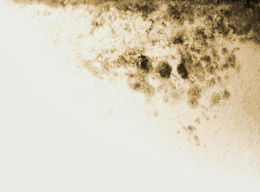
Controlling indoor mold and mildew
Posted in Healthy Home on February 11, 2013 by FloridaHealth.com staff. Last modified on September 11, 2019. Read disclaimer.
Did you know that most Americans spend 90% of our time indoors? And that number is even higher for the very young, very old and disabled among us. Unfortunately, things like synthetic building materials, cleaning supplies and pesticides can all contribute to elevated air pollution levels in our homes, schools and businesses. Plus, humid areas like here in Florida have yet another common but potentially dangerous, indoor air toxin to be aware of: mold.
Mold (also called mildew) is sneaky and is often difficult to spot. It likes to hide in your kitchen, bathroom, A/C ductwork, shoes and other dark and damp places. Molds can even grow on clothes, toys, wood, paper, inside walls, under carpets and anywhere there is moisture and dirt.
 What are the signs of mold in house, school or office?
What are the signs of mold in house, school or office?
If the indoor air smells earthy or musty or if you can see mold or moisture damage, you probably have problems that need to be addressed.
 What are the symptoms of mold sickness?
What are the symptoms of mold sickness?
How each of us responds to mold exposure depends on many factors:
- Our sensitivity to mold
- Our general health
- The amount of mold
- Length of exposure
- While mold exposure isn't healthy for anyone, people with low mold sensitivity may experience nothing at all.
- People with mold allergies (believed to be 10% of the general population) may experience a wide range of discomforts from the sniffles, runny nose, red eyes and sneezing associated with hay fever to shortness of breath, fatigue, fever and/or headaches. It is the body's immune response to this foreign but often harmless invader (mold and mold spores) that's more of a concern than the actual presence of the mold. Allergic reaction is the most common health problem associated with mold exposure.
- People who suffer from asthma may have an asthma attack since mold spores are so small they can travel to the lungs.
- People who are immune compromised or have a chronic lung illness are more at risk for developing serious lung, or even systemic, infection.
Where to look for mold in your house
Look for pipes and other places that drip or leak, or where there is moisture. Areas that are often damp, humid or wet can be ideal breeding grounds for mold. If you discover leaks in your home, get them fixed. Dry the moist places. As much as possible, keep your home dry and cool to prevent mold from growing and spreading.
(Note: Our goal is not to dry ALL humidity from the air since this can be harmful to plants, clothing, pets and our health. In general, an indoor humidity level of between 30-60% is considered to be optimal. Use a hygrometer or relative humidity meter to check moisture levels in your home. )
Here are some room-by-room suggestions to help keep your home mold free.
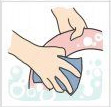 KITCHEN
KITCHEN
- Regularly clean your refrigerator drip pan.
- Regularly remove garbage to prevent odors and spoilage.
- Dry condensation around windows and doors.
- Open windows or use exhaust fans when cooking.
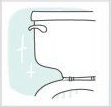 BATHROOM
BATHROOM
- Allow wet, damp rags, clothes, towels or shoes to dry before storing.
- Quickly fix any water leaks.
- Open windows or use exhaust fans when taking baths or showers and for 10-15 minutes afterward. (Fans should vent to outdoors rather than the attic, living areas or crawl space.)
- Dry shower curtains, doors, tracks and walls after showers and baths.
 LIVING ROOM
LIVING ROOM
- Open draperies, shades or blinds to let the sun shine on carpets.
- Reduce the number of potted plants in your home since soil is a good place for mold to grow.
- Frequently clean home accessories (area rugs, curtains, upholstery, bedding, etc.) and keep them dry.
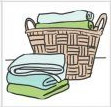 LAUNDRY AREA
LAUNDRY AREA
- Promptly remove lint every time the clothes dryer is used.
- Hang wet laundry outside.
- Make certain that laundry is completely dry before putting it away.
- When using laundry dryer, allow clothes to cool before storing.
- Vent the clothes dryer to the outside.
 ATTIC
ATTIC
- Inspect and repair any roof leaks or other places where water may enter your home.
- Make sure the attic is insulated and has ventilation (soffit and ridge vents are recommended and attic fans help).
- Do not bring furniture, clothing, books, etc. that have been stored in a moldy place into your home.
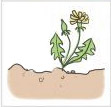 CRAWLSPACE
CRAWLSPACE
- Cover bare soil in a crawl space with 6-mil polyethylene plastic. (Weigh plastic down along foundation walls.)
- Foundation vents should be kept open for cross ventilation.
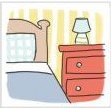 BEDROOMS
BEDROOMS
- Open closet doors so air can circulate.
- Open air vents and windows to increase air flow.
- Sleep with windows closed since the concentration of outdoor mold spores goes up as nighttime temperatures go down and humidity increases.
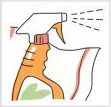 BASEMENT
BASEMENT
- Run a dehumidifier - especially during humid, summer months. (Remove water daily.)
- Repair leaky pipes and any groundwater seepage.
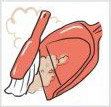 GENERAL TIPS
GENERAL TIPS
- Routinely clean and replace furnace or air conditioner filters. (HEPA filter are effective at trapping mold spores.)
- Vacuum and clean your home regularly, especially bathrooms and kitchens.
- In summer, when relative humidity exceeds 60%, run a dehumidifier or air conditioner. (Be certain A/C condensation drains outside and away from house foundation.)
- In winter, or in cool areas, run a heater when humidity is high.
- Do not store firewood inside the home.
- Gas heaters and gas logs are vented to the outside using approved flue.
 OUTSIDE
OUTSIDE
- Clean clogged gutters and downspouts.
- Keep shrubs at least 1 foot away from outside foundation and walls of the home.
- Keep the chimney clean.
- Mildew should be cleaned from exterior of house, walls, wood floors or other wood surfaces before repainting or varnishing. Otherwise, mildew can quickly grow through the new coating.
- Wear a dust mask when doing yard work.
 When mold dries out, is it dead?
When mold dries out, is it dead?
When visible mold dries out, it dies and will no longer spread. However, any spores (mold's version of seeds) that are left behind can remain viable for months or even years. And dried spores can easily become airborne, disperse and wait for a warm, wet opportunity to grow as new mold -- in as little as 4 to 12 hours! So mold must not only be killed, it must also be removed!
Fortunately, bleach neutralizes spores as it kills the mold -- if the bleach is able to come in direct contact all the way down to the mold roots (which is easy on glass, showers and counter tops but nearly impossible on porous materials such as wood and drywall).
DIY Mold Removal
If the affected area is less than 10 square feet (https://www.bobvila.com/articles/23-quick-tip-diy-mold-removal/) and you are careful, you can probably remove the mold yourself (after addressing the source of the moisture problem). However, if your home has a serious mold problem or you have very young, very old or immune-compromised people living in the home, NEVER TOUCH IT. Contact your local health department.
- Wear waterproof gloves.
- Cover any exposed skin.
- Protect your eyes from mold by wearing snug-fitting goggles.
- If the site has a high mold infestation (for example after a flood), wear a face mask approved by NIOSH (National Institute for Occupational Safety and Health) or a respirator rated N-95 or higher. DO NOT USE A "SURGICAL MASK" OR "DUST MASK." Wear a long-sleeved shirt and long pants.
 Hard surfaces can normally be cleaned using a soft-bristled brush with a mixture of 1 cup laundry bleach (maximum) to 1 gallon of water. NEVER MIX BLEACH WITH AMMONIA. OPEN DOORS AND WINDOWS TO ALLOW FOR VENTILATION.
Hard surfaces can normally be cleaned using a soft-bristled brush with a mixture of 1 cup laundry bleach (maximum) to 1 gallon of water. NEVER MIX BLEACH WITH AMMONIA. OPEN DOORS AND WINDOWS TO ALLOW FOR VENTILATION.
Sensitive to harsh chemicals like bleach? Two, less toxic mold-cleaning options include:- Wet area with straight, white vinegar in a squirt bottle or on a cloth, rub as needed and let the vinegar sit. The vinegar smell should go away after a few hours. (In fact, some experts feel that vinegar does a better job than bleach of penetrating deep into porous surfaces, reaching all the way down to the mold roots.) DO NOT MIX VINEGAR WITH BLEACH.
- 3% hydrogen peroxide in a spray bottle. Spray moldy area, let sit for 10 minutes, scrub clean and wipe dry. TEST SMALL, HIDDEN AREA TO MAKE SURE THIS WON'T DISCOLOR TREATED AREA.
- Porous items that become moldy, such as drywall, carpeting, ceiling tiles or furniture, may have to be replaced.
- Click here for tips on removing mold from clothing, ceramic tile, and exterior wood siding.
- Mold cannot be covered up by paint. It must be removed.
- If the cleanup is a large or "extensive" job (for example after a flood where a single patch of mold covers an area larger than 3 foot by 3 foot), you may want to hire a professional who is experienced in mold cleanup to do the job.
Sources (Accessed February 11, 2013)
Cleaning clip art: http://audreyschilaty.com
NC State University, A&T State University, North Carolina Cooperative Extension, Doc: Put a hold on mold
Tennessee Dept. or Health: http://health.tn.gov/environmental/mold.htm
http://www.cdc.gov/mold/stachy.htm

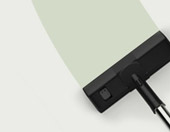 Germiest items in your home | Quiz
Germiest items in your home | Quiz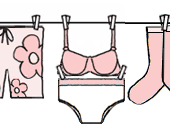 When to wash clothes | Infographic
When to wash clothes | Infographic How to select, ripen and enjoy healthy avocados
How to select, ripen and enjoy healthy avocados Potty training tips for girls and boys
Potty training tips for girls and boys Home & yard mosquito control | Infographic
Home & yard mosquito control | Infographic 9 Beauty secrets to younger-looking skin
9 Beauty secrets to younger-looking skin Dietary needs of adults and older adults
Dietary needs of adults and older adults Can cranberry juice prevent urinary tract infections?
Can cranberry juice prevent urinary tract infections? 9 Foods that are delicious and super nutritious
9 Foods that are delicious and super nutritious What works (and what doesn't) for hangovers
What works (and what doesn't) for hangovers Tips for preventing or treating sunburns
Tips for preventing or treating sunburns Foods that are high in calcium for healthy bones
Foods that are high in calcium for healthy bones Action plan for getting rid of cockroaches
Action plan for getting rid of cockroaches What causes body odor and how to prevent it
What causes body odor and how to prevent it Important tips for preventing heart disease
Important tips for preventing heart disease Ha! Try this funny technique for managing stress
Ha! Try this funny technique for managing stress How to prevent and remove mold and mildew
How to prevent and remove mold and mildew Container gardening ideas
Container gardening ideas What is cholesterol and tips for managing it
What is cholesterol and tips for managing it